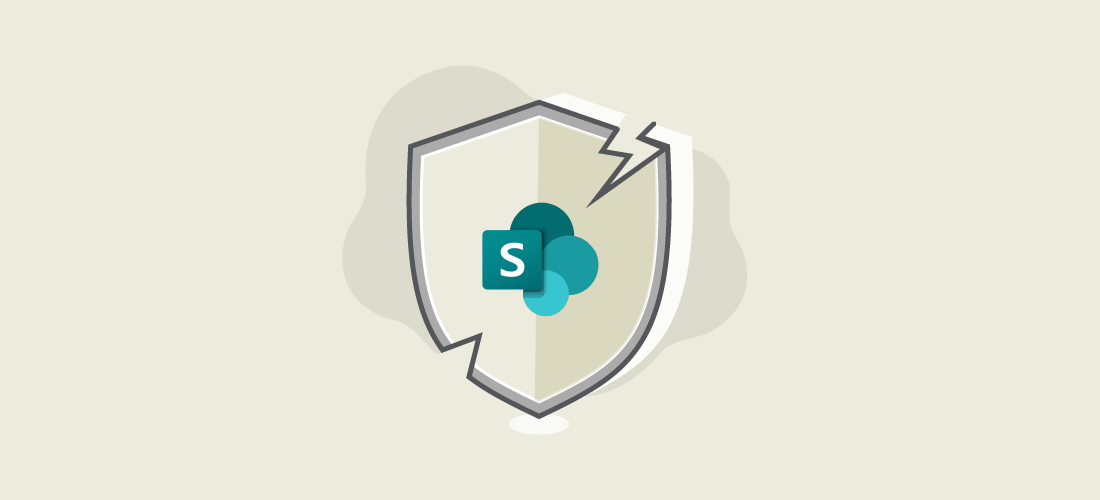The ToolShell exploit (CVE-2025-53770) didn’t just expose a SharePoint vulnerability; it exposed the real threat tied to aging infrastructure and systems that can’t keep up. In minutes, attackers gained unauthorized access, executed code, and extracted machine keys. All of this happened without credentials. Microsoft patched the flaw for SharePoint 2016 and upwards, but what happens when the next one hits, and your systems are still running on yesterday’s architecture?
ToolShell is patched. Are you still at risk?
If you’ve installed the latest updates and rotated your keys to ensure previously compromised credentials can’t be reused, you’ve addressed the immediate threat. But the underlying exposure remains. On-premises systems demand ongoing patching, key security, endpoint management, firewall rules and 24/7 monitoring. And in the case of zero-day attacks like ToolShell, once a patch is released by the vendor, rapid and effective installation is imperative. Without the right endpoint management solution capabilities, these tasks can be time-consuming and deliver inconsistent outcomes, especially across large or distributed environments.
Threats like ToolShell expose just how quickly vulnerabilities can escalate. And it raises more pressing concerns. If SharePoint was the target today, which of your other systems would be next?
Every legacy system is a potential source of vulnerability
The ToolShell exploit may have hit SharePoint first, but it’s a warning for your entire infrastructure. If attackers can compromise a collaboration platform without credentials, you can be sure that they will already be looking for the next vulnerability. Threat actors are continuously searching for unpatched systems.
To minimize the risk of cyber breaches and ransomware, maintaining the highest possible levels of patch coverage is essential. But manually patching multiple systems can be a time consuming and error prone process. In today’s complex environments, the use of a highly automated endpoint management system is the only way for organizations to effectively manage their patch workloads.
Staying ahead of zero-day threats like ToolShell means closing patching gaps fast. Unified endpoint management (UEM) tools like KACE enable automated, policy-driven patching across diverse environments. With built-in catalogs, scripting capabilities and support for 350+ vendors, KACE empowers IT teams to stay secure without falling behind.
Discover how you can transform your patching operations and minimize system vulnerabilities, with KACE unified endpoint management.
Migration is more than a move. It’s a security strategy.
Migrating to modern platforms isn’t just about getting new features. It’s a proactive move that directly strengthens your security posture. Modern environments give you:
- Built-in security
- Automated patching and updates
- Threat detection and prevention at the platform level
- Better scalability and integration across services
- Less manual overhead and fewer points of failure
In short, they help you stay ahead of threats, rather than scrambling after the next zero-day.
Why organizations trust Quest to lead their modernization journey
At Quest, we’ve been helping organizations migrate from legacy environments for over 20 years. Whether you’re moving to the cloud or upgrading your on-prem stack, we deliver the tools and experience to make migration fast and secure.
With Content Matrix, our enterprise-grade migration solution, you can:
- Migrate directly from older SharePoint versions (2010, 2013, 2016, 2019) to M365 and SharePoint Server Subscription Edition without interim upgrades to modernize
- Preserve metadata, permissions, workflows and versions
- Restructure and modernize your content as you migrate by cleaning up old content architectures for better governance and searchability
- Perform incremental migration syncs to ensure your users can continue working during the transition
- Scale migration jobs across multiple machines for large or complex environments
Not sure where to start? Use the Migration Matcher, a guided tool that helps you find the best Quest solution based on your current setup and modernization goals. It’s a fast, straightforward way to get aligned on your path forward.
Don’t wait for the next zero-day to test your defenses. Start modernizing now with the right tools, the right plan, and the right partner.


